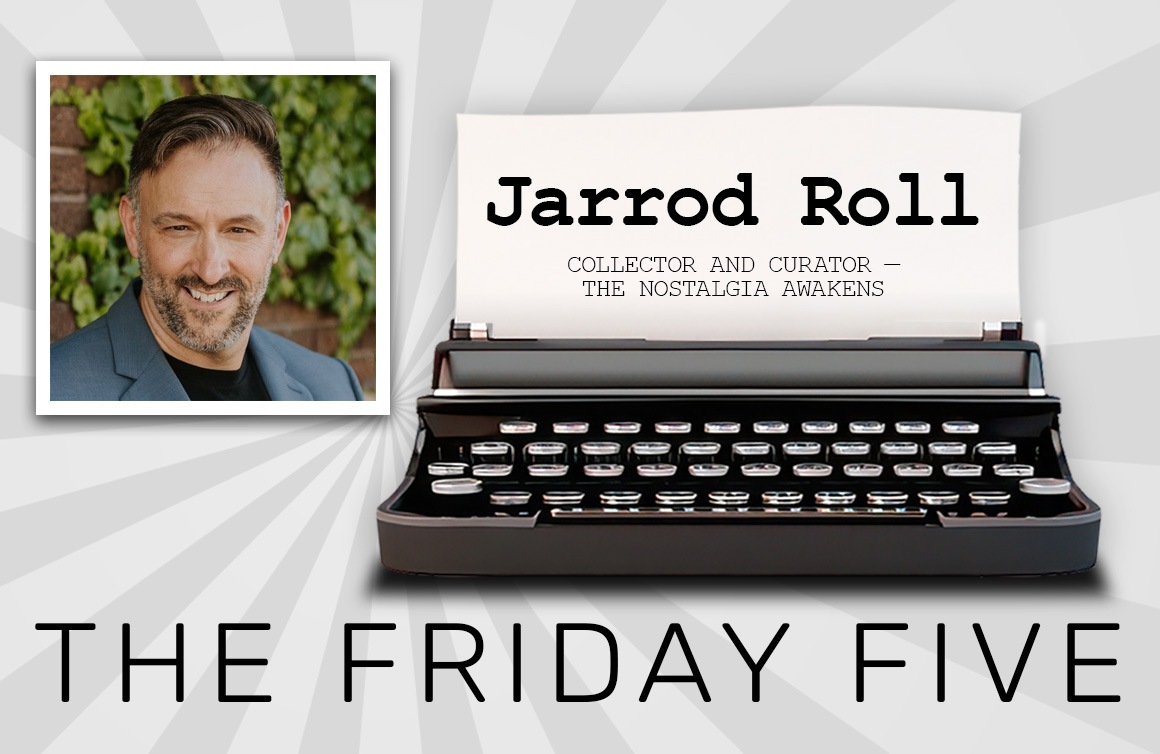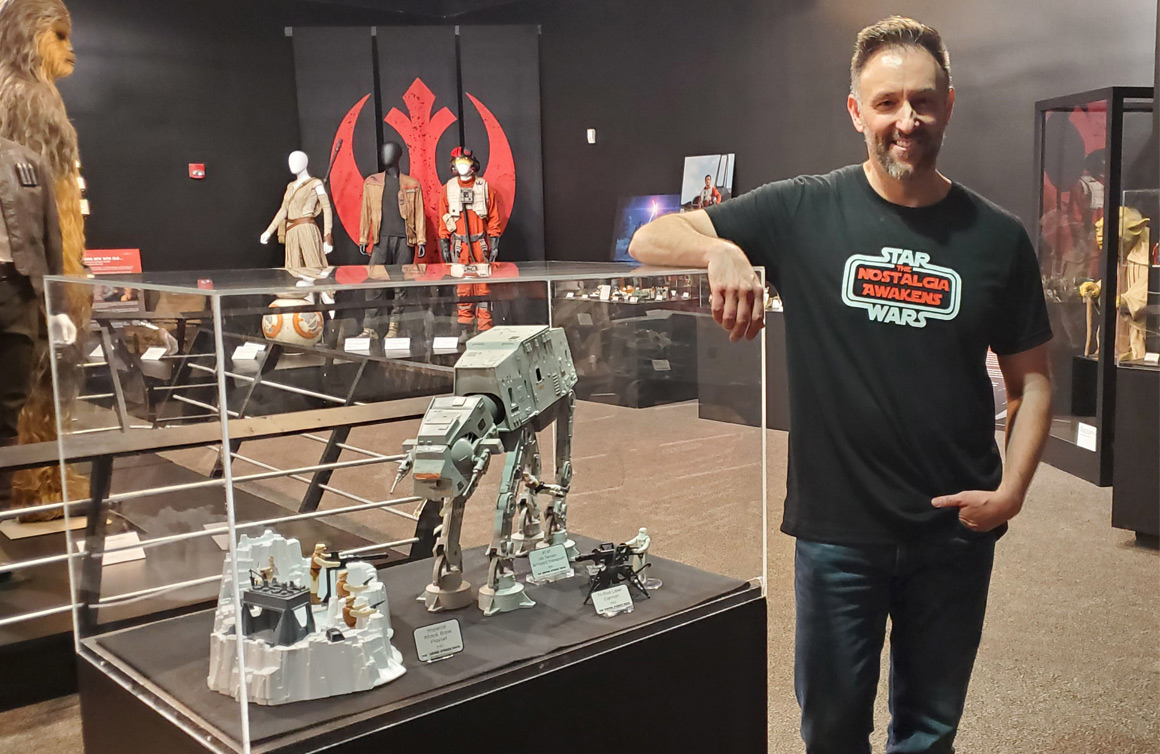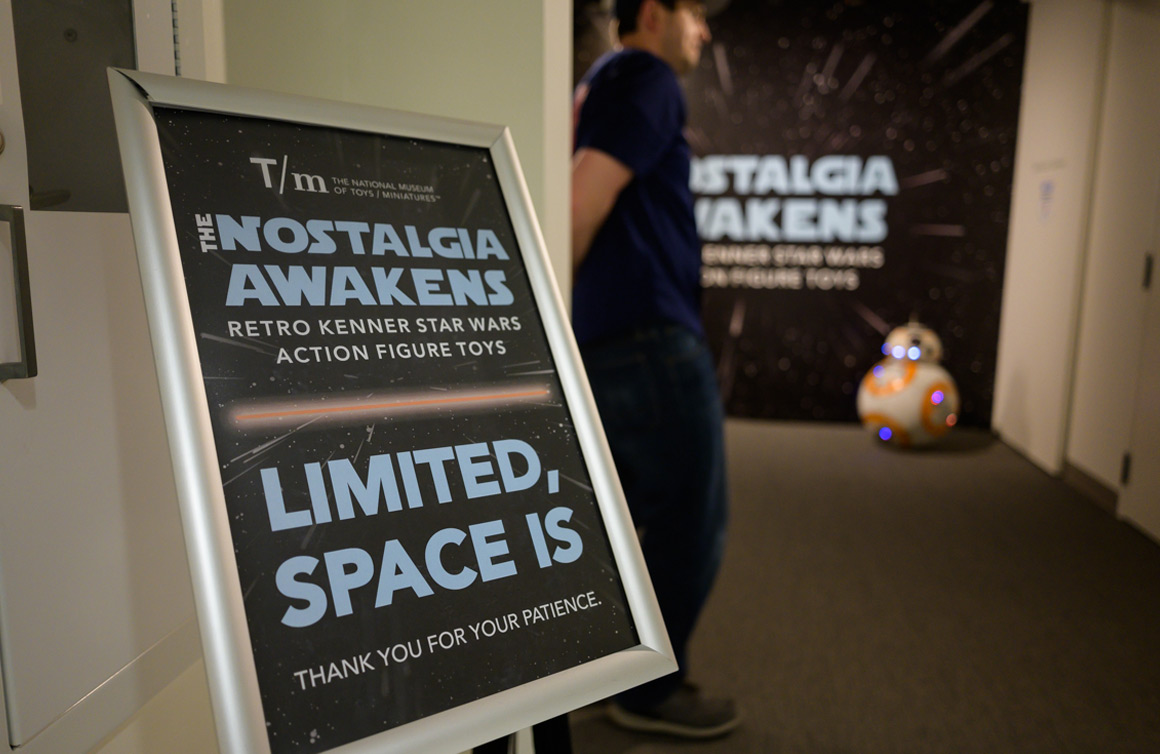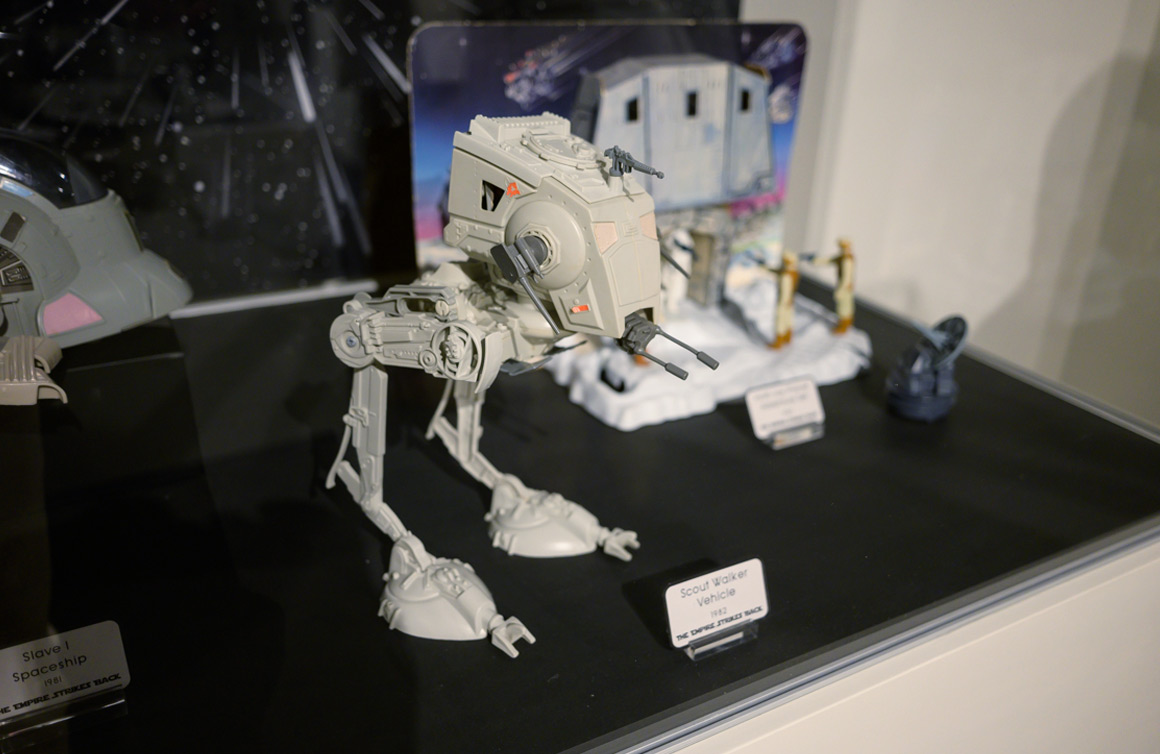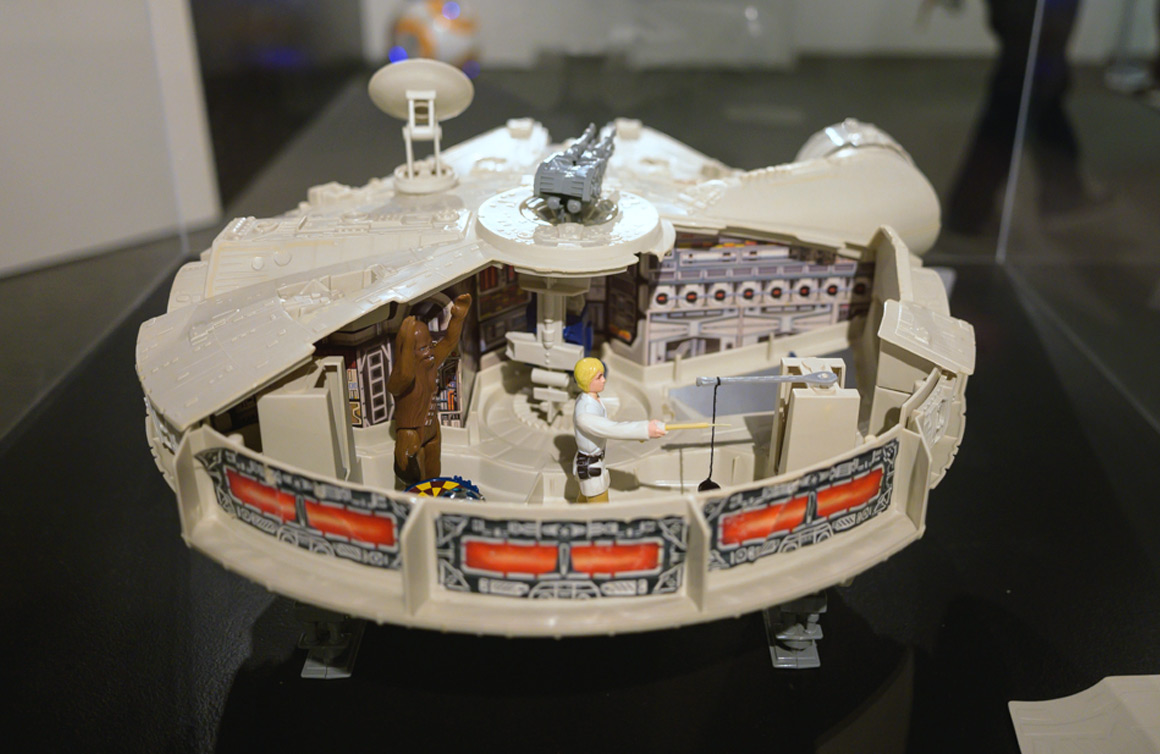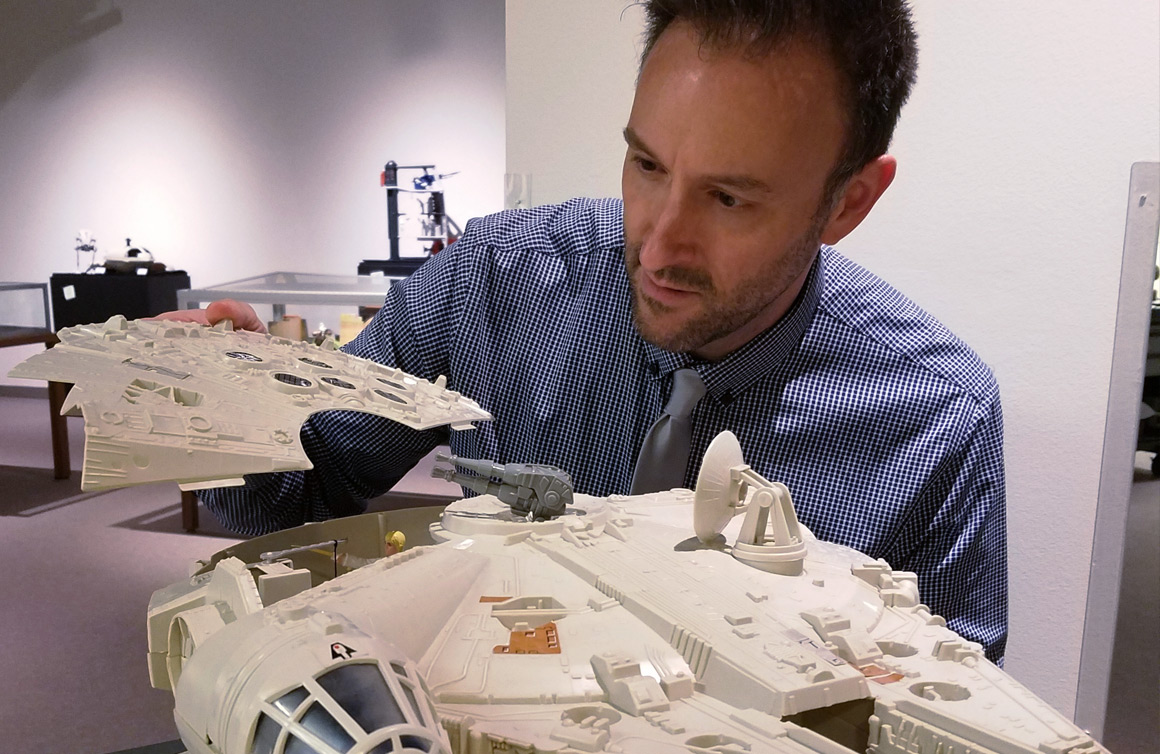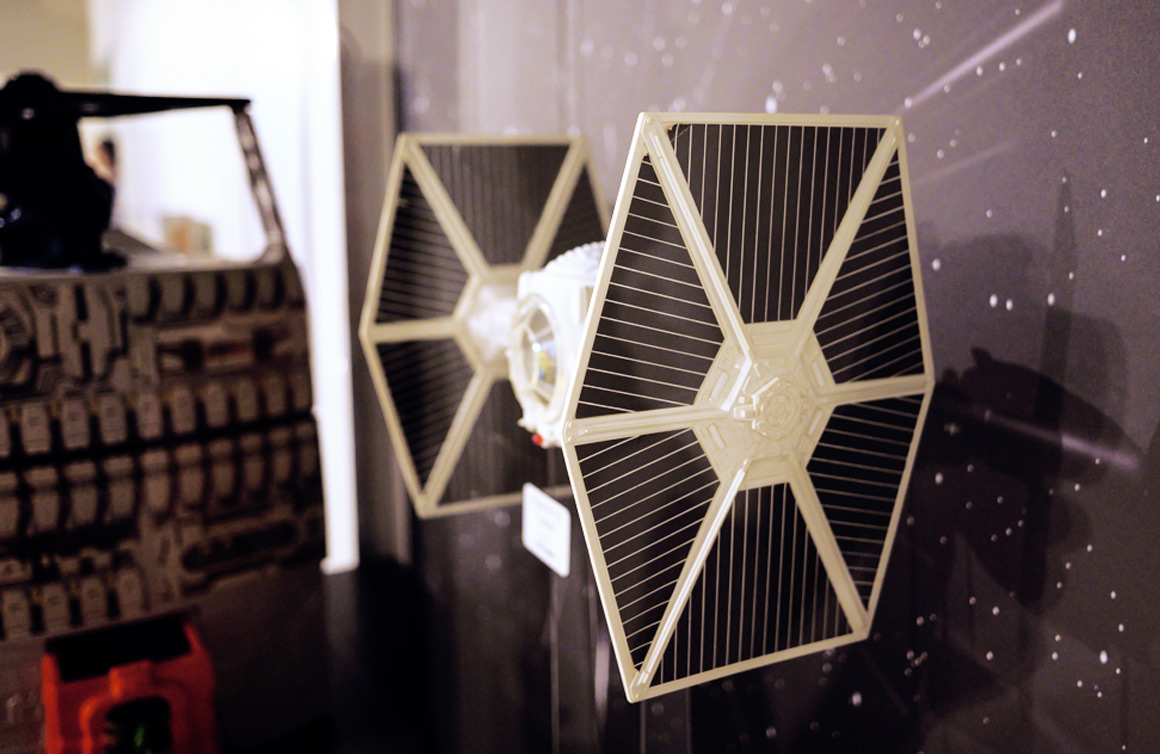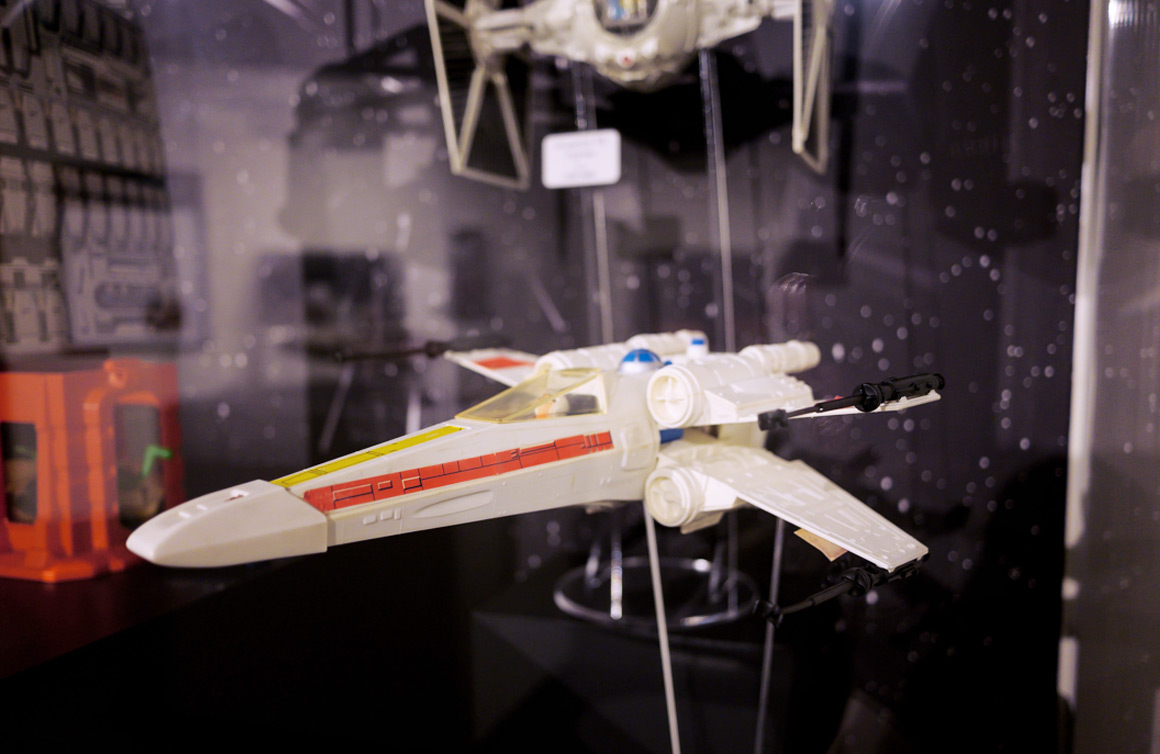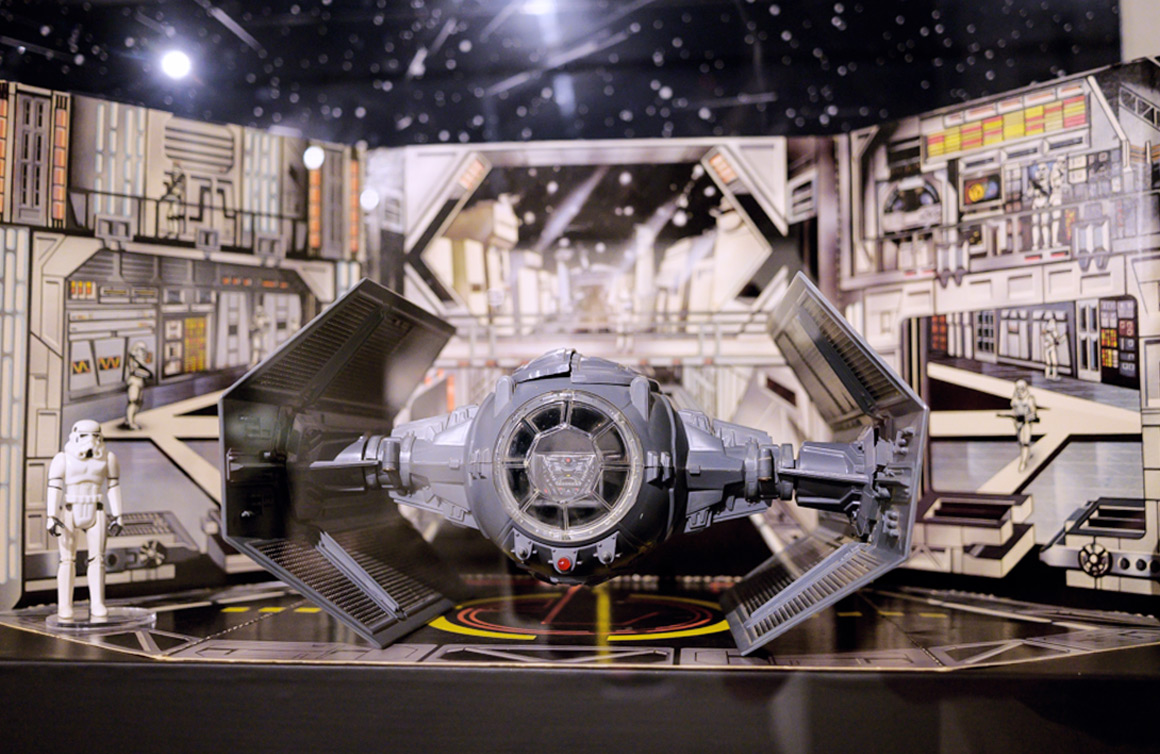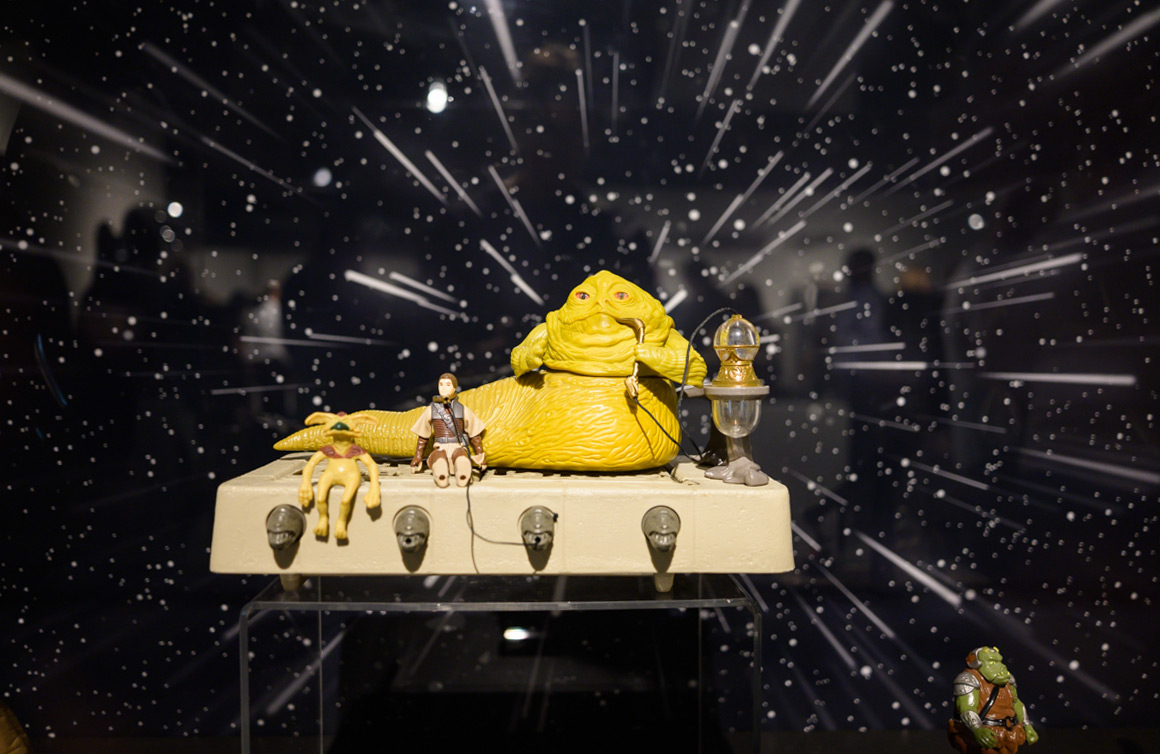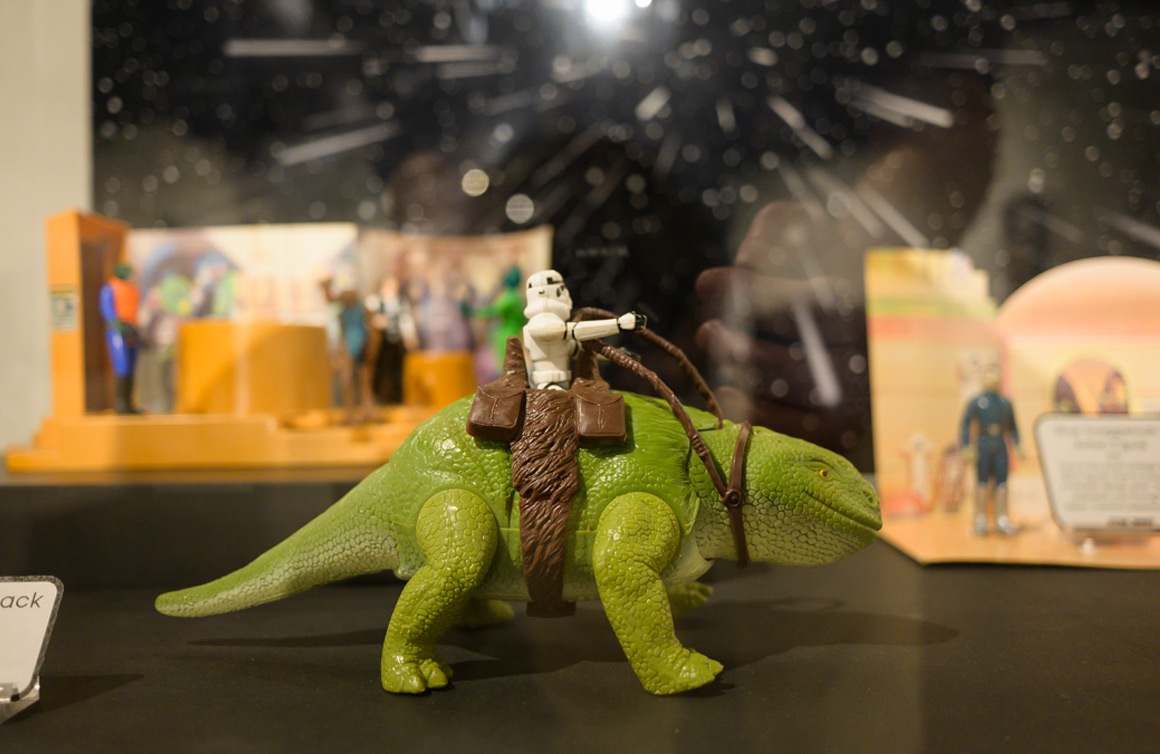Tell us about your personal connection to Star Wars.
I saw Star Wars when I was four years old, in July of 1977. I barely remember it, but I do remember being affected by the movie, thinking a lot about it, and drawing pictures about it.
In the spring of 1978, I went over with my mom to her friend’s house, who had a son about my age. He showed me an action figure, Darth Vader. I didn’t realize that they had made toys because they had just come out. I asked my mom if we could get a Star Wars action figure. She took me to the store, and I came home with a Chewbacca action figure. That was my first one.
Seeing Star Wars, like so many people of that era, really changed me for many reasons that have been documented and explained by others much more articulately than I can. It just resonated with me — the story, the heroes, the villains, all the characters. I became so inspired by it.
I watched it for a second time in the summer of 1978, and I don’t think I saw it again as a kid. My exposure to Star Wars was more through things like picture books, action figures, and drawing pictures. I just ate it up and always wanted more. There’s a very big difference in how my kids live today. When we want to watch a movie, we go to the movie theatre and then months later, we can watch it as many times as we want on the media or streaming. I only saw Star Wars twice in five years, and it had a huge effect on me. I was a Star Wars Kid — I had the t-shirts and Halloween costume. We role-played it in the backyard. It was constantly on my mind. The action figures were an important part of that.
Not all kids connect with ideas or stories in the same ways. Looking back, I see that, for me, the action figures helped me literally get my hands around this world, this story, this universe, and these feelings of excitement and heroism. I could put my hands on it, control it, and reinvent it. That’s the power of toys for a kid, and why I think I was drawn to them. And, still am.

The exhibit features every action figure toy made by Kenner from 1978 to 1985 based on the original three Star Wars movies. What were some of the biggest challenges in completing such a robust collection?
A bit of backstory as to how this even came about. Back in early 2015, there was an announcement that we would have the first new Star Wars movie since Return of the Jedi to continue the story of the original trilogy, The Force Awakens. There was a lot of excitement and a lot of buzz. People weren’t cynical about Star Wars yet, and we were excited about this new chapter.
I’m director at Monroe County Local History Room & Museum in Wisconsin. I was talking with a colleague who worked in another museum asked they asked if I was still collecting Star Wars toys, and if I would ever consider bringing out my collection to share with the public at the museum. At my museum at that time, we had a section called Collector’s Corner, a place where we could temporarily display a county resident’s collection of something that lent itself well to a history museum. My collection was very modern — Star Wars was only 35 to 40 years old at that time. After discussing the idea with my board of trustees and justifying it in as a way to reach the often elusive Gen X audience — whose kids come in for school trips and whose parents come in because they are retired — we decided to move forward with it.
And I knew if I was going to it, I had to approach it with the same care and standards as any other curated exhibit in the museum. I wanted it complete — no missing pieces, all original, and in good condition. I wanted to match the memory and meet the expectations of that kid who grew up with Star Wars and is now coming to see it again now. If it were me revisiting these old plastic friends, I’d want to see all of them.
It all started back in 1991 when I got back into collecting Star Wars stuff again. I discovered there was so much more out there from Kenner than I’d ever realized. I started collecting it all, and I wanted to be able to say that it’s all original, all complete, all in good condition, and everything that Kenner made.
Now, to your question about the challenge of trying to do that.
There’s the practical challenge of finding those items complete and in good condition without paying through the nose. In truth, just about everything can be purchased right now. You can go on eBay and probably buy 85% of it. The rest, you’ll have to wait until it comes up and then pay what people are asking.
When I was preparing the exhibit in 2015, the challenge was defining what counted as “every action figure toy Kenner made.” At that time, I only included items from the original Star Wars collection that actually appeared in the movies. For example, Kenner’s Droid Factory playset was inspired by Star Wars but wasn’t in the film. As a kid, I wasn’t interested in toys that weren’t in the movie and I didn’t want it in my collection either. But after showing the exhibit at a few other venues, people started asking me about the pieces I had left out. That led me to expand the collection to include items sold alongside the movie-based toys, even if they didn’t appear in the movie.
The action figure carrying cases are a good example. Every kid had at least one, usually the Darth Vader case. When I first put the exhibit together, I didn’t include them, even though I had some, because my focus was more on the vehicles, creatures, and playsets. But the current exhibit at The National Museum of Toys/Miniatures in Kansas City, I do include the cases. They receive a strong reaction from visitors because they’re very visually appealing, iconic, and define the era.

What inspired the idea of a travelling exhibit?
The exhibit at the Monroe County Local History Room & Museum was initially planned just for the holiday season. But we discovered it was attracting visitors from three or four hours away. Being two to three hours from Minneapolis, St. Paul, Milwaukee, and Madison — and a bit further from Green Bay and Chicago — we found people were making the trip specifically to see it. We were getting a great reaction, so we ended up keeping the exhibit up for a year.
About six months later, I was invited to be a presenter at a national museum conference. The session that I was part of was called “You can’t do that in a Museum,” highlighting examples of museums using non-traditional methods to attract new audiences. I shared our experience with the Star Wars exhibit, and some other exhibits we’d done, that targeted visitors in the 30 to 50 age range.
As I was stepping down from the panel when it was over, a woman from the audience approached me. She was from a large library outside of Chicago, in Elgin, Illinois, that had a gallery space. She thought the exhibit would be wonderful for her patrons and asked if I would consider lending it out.
That’s what started it all. Suddenly, I had to start thinking about what came next. At first, it was challenging because most travelling exhibits come with their own display cases and set layout. I had to make sure that each venue have sufficient secure space to display the collection properly. It’s like a logic puzzle — there are dozens of playsets and vehicles, hundreds of figures, and countless ways to arrange them. And every venue is different, each with its own setup and limitations.
After the success of the exhibit in Elgin, I started contacting colleagues whom I knew at different museums to let them know about the collection, and it grew from there.
As someone who loves toys, I’d always known about The National Museum of Toys/Miniatures. It was on my bucket list of places to visit. Then, last year, I had a reason to go to Kansas City. I was accompanying my son, who was headed there for some post-high school education experiences. While we were there for the week, I suggested we visit the museum. I emailed their curator, Madeline, to see if she’d be open to meeting and hearing about the Star Wars exhibit. We ended up meeting and talking about it. I followed up a few weeks later, and she told me that the museum would love to host the exhibit.

Could you share how many museums are included in this tour, and what the process of engaging with them was like? I’m particularly interested in the lead time involved and any unique considerations for adapting the exhibit to different museum spaces.
I don’t have anything solid after The National Museum of Toys/Miniatures ends in January 2026. I’m waiting to hear back from a large library again down in Illinois, which would like to borrow the collection.
There are some considerations with the collection. I require that everything is behind glass. It could be display cases or acrylic cubes. It doesn’t really matter as long as it’s secure. I do decline invitations to loan only a portion of the collection. I don’t think it’s worth showing only half of it.
In terms of lead time, in the museum world, we like to plan as far ahead as possible. For Kansas City, there was about a year between my first meeting with them and the exhibit’s opening, with around six months of active planning. The museum’s curatorial staff understands toys, which made it a great opportunity to provide interpretations. Didactic text panels were created for the exhibit to answer common questions and share more of Kenner’s history. I did a lot of research and writing, the equivalent of writing a series of scholarly essays. Each toy has a card explaining what it is, which movie it was made for, and maybe some interesting information about it. For this exhibit, I spent hours developing interpretive text because of the venue. It’s a large gallery, and I’m excited to see the collection spread out, with space to showcase every piece.
Another element that makes the Kansas City exhibit special is a massive timeline that fills an entire wall. It’s something I’ve always wanted to do, and it looks great.
This is the most involved installation I’ve done, with the most preparation. At a different venue, a technical college in Wisconsin, they simply unlocked the door and gave me a weekend to set everything up. Each venue is different.

How does the experience of collecting differ from the approach you take when curating an exhibit, especially in terms of preservation, presentation, and the story you’re trying to tell?
There are people out there with private Star Wars collections. They have the same stuff I have, and maybe even a broader collection with variations of every figure and prototypes.
What makes this different, and why it works well for me to bring it to museums, is that I come from a museum background. I’m always thinking about how to display the collection in a way that’s visually appealing to the visitor and makes the most sense in the space, while also providing text to give visitors historical context and purpose. If I were to do this in my home, I would do something very similar.
I keep my collection stored properly — in acid-free boxes and inert Ziploc bags — and maintain a detailed inventory. That’s part of my background, but it’s also something serious collectors tend to do.
With plastic Star Wars toys, parts can yellow and become brittle over time. I had to be really careful with things like extending the wings of the X-wing Starfighter because if I pressed too hard, it would break. I busted up a Millennium Falcon and had to replace it. It was just so fragile. And, sometimes stickers need to be reapplied.
In the world of collecting, one of the things that has changed is the availability of reproductions. It complicates things because the provenance of everything in my collection adds value. When I was completing this collection in 2015, I realized I was missing a Princess Leia blaster for one of the figures. I can easily go on eBay to buy another action figure. Thousands of these figures were made. But, out of thousands, you can eliminate some of them because they are no longer white. Some of them can be eliminated because they don’t have capes, or the capes have tears. How many Princess Leia figures can you find that have the blaster, are still white, and don’t have tears in the cape? All of a sudden, you’re down to just a few, and you’re going to pay for that.
That’s why the trend now in the world of toy collecting is all about grading, because it’s the only way you can get around buying bootlegs, fakes, and reproductions. I’m so glad I’m not collecting this stuff anymore, because it’s a whole different world, and I don’t like it.

Why do you think these Kenner Star Wars toys have become such an iconic part of pop culture?
I think there are several reasons why.
One is simply because these figures were everywhere. I don’t know the exact statistic, but it’s documented somewhere that at one point, every kid in the United States owned a Star Wars figure. They were everywhere. If you didn’t own one, someone you knew did — a neighbour, a friend, a cousin.
The other reason is the impact Star Wars had on childhood and pop culture. The toys played a big part in that, they were a way for kids to take part in that world and bring the fantasy world to life. On top of that getting toys is tied to moments kids remember: birthdays, holidays, and other positive experiences.
For us as kids, even though it sounds like we were spoiled, these toys meant so much because we really didn’t have a lot. But, at Christmas and birthdays, we would get toys. While they weren’t that expensive, to us it felt like we were getting treasure or winning the lottery. We’d go into the holidays with maybe two vehicles and a dozen figures, and by the end of Christmas Day, our collection had doubled.
Hasbro, which now owns Kenner, understands this. Right now, you can buy the Star Wars Retro Collection. These toys use the same or similar moulds as the original Kenner figures, and Hasbro is remaking them. They are highly detailed, and you can swap out hands, heads, and other elements. This collection is still marketable. People keep buying them because these pieces of plastic capture that feeling of being a kid again: seeing the movie for the first time and feeling part of that world and story.
These objects act as memory recorders and memory triggers. And because they’re usually tied to positive experiences, we naturally seek them out.

Learn more about The Nostalgia Awakens: Retro Kenner Star Wars Action Figure Toys at The National Museum of Toys/Miniatures and visit Jarrod’s website to see more of the collection.

